Cabo Roig residential area, Orihuela
This area has been a popular favourite with holidaying Spanish for 40 years
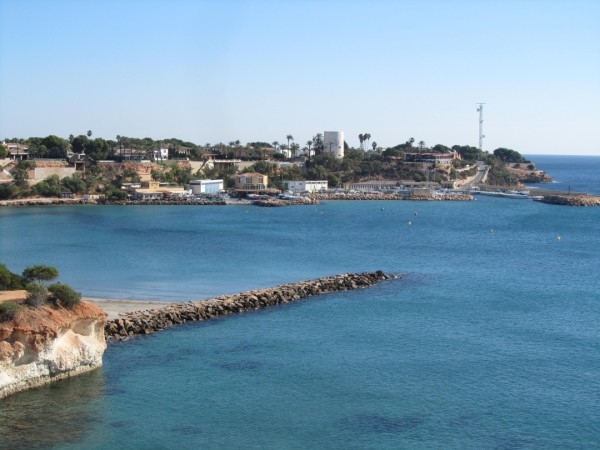 Today it is a firm residential favourite with European buyers, a fact which is reflected in the wide range of social activities on offer.
Today it is a firm residential favourite with European buyers, a fact which is reflected in the wide range of social activities on offer.
To refer to Cabo Roig as a twentieth-century residential development would be almost entirely true, but the most emblematic building in the area shows that this is not the whole story: a 16th-century watchtower was 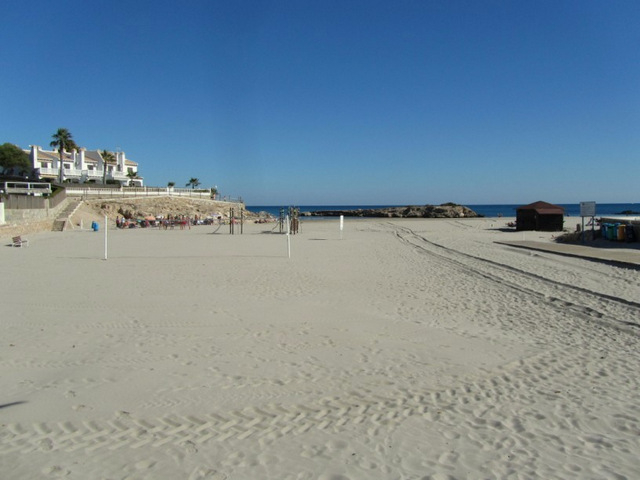 built on the headland to warn of imminent Berber pirate attacks approaching from the north of Africa, and still stands out over the mostly low-rise developments of the last forty years.
built on the headland to warn of imminent Berber pirate attacks approaching from the north of Africa, and still stands out over the mostly low-rise developments of the last forty years.
“Cabo” means “headland” or “cape” in Spanish, and given that this is the geographical feature occupied by the development it comes as no surprise that the coastline is mostly rocky. However there are two very popular beaches on either side of the headland: La Caleta to the south and the superb Cala Capitán to the north.
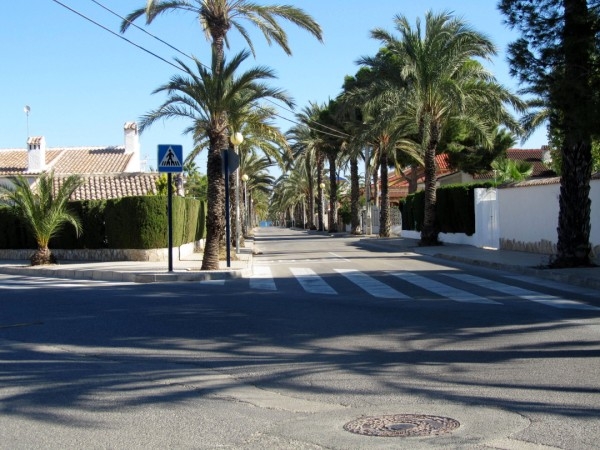 Nowadays almost all of the buildings here are residential, and since this was one of the first parts of Orihuela’s coastline to be developed the style of accommodation reflects the era in which they were constructed. Small detached chalets with private gardens are very much the order of the day except in the part closest to the main N-332 road, and although nowadays many of them are owned by northern Europeans, these were the houses built by and for the first Spanish tourists from Madrid. There are also a couple of gated apartment block communities at the southern end of the area, and as is the case throughout Orihuela Costa the majority are used as holiday homes: there is a substantial population all year round, but only in the summer is it really busy.
Nowadays almost all of the buildings here are residential, and since this was one of the first parts of Orihuela’s coastline to be developed the style of accommodation reflects the era in which they were constructed. Small detached chalets with private gardens are very much the order of the day except in the part closest to the main N-332 road, and although nowadays many of them are owned by northern Europeans, these were the houses built by and for the first Spanish tourists from Madrid. There are also a couple of gated apartment block communities at the southern end of the area, and as is the case throughout Orihuela Costa the majority are used as holiday homes: there is a substantial population all year round, but only in the summer is it really busy.
 There is also a small church (dedicated to Nuestra Señora de los Ángeles) at the northern end of the Avenida del Cabo, which forms a loop around the urbanization, and behind this are a sports club, restaurant and summer cinema. These facilities at the north-western end of the area, near the N-332, are slightly run-down: they were built alongside the first chalets in the 1970s and 80s, and are beginning to show their age, but other facilities are available in other areas close by: there is no real division between Cabo Roig and the areas of Aguamarina to the south and La Zenia to the north, while Villa Piedra on the other side of the N-332 features another more modern church and newer residential properties.
There is also a small church (dedicated to Nuestra Señora de los Ángeles) at the northern end of the Avenida del Cabo, which forms a loop around the urbanization, and behind this are a sports club, restaurant and summer cinema. These facilities at the north-western end of the area, near the N-332, are slightly run-down: they were built alongside the first chalets in the 1970s and 80s, and are beginning to show their age, but other facilities are available in other areas close by: there is no real division between Cabo Roig and the areas of Aguamarina to the south and La Zenia to the north, while Villa Piedra on the other side of the N-332 features another more modern church and newer residential properties.
Shopping and leisure facilities nearby
Apart from the sports complex restaurant and a couple of establishments next to the beach, it is realistic to 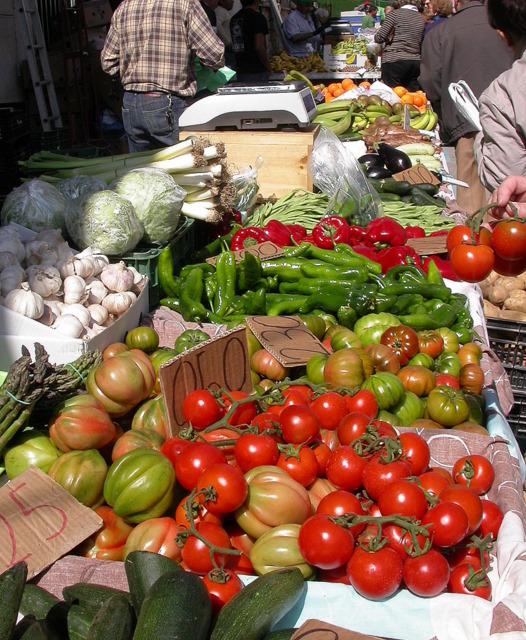 say that those in search of dining facilities and shops are best advised to head for the nearby Aguamarina commercial area, which is next to the local medical clinic, the Zenia Boulevard mall just a couple of kilometers away or any of the other shopping centres only a few kilometers to the north along the N-332. Habaneras in Torrevieja is just 20 minutes’ drive, and other large malls include Dos Mares in San Pedro del Pinatar (15 minutes), Espacio Mediterráneo in Cartagena (30 minutes) and the Nueva Condomina and Thader centres in the north of Murcia (45 minutes).
say that those in search of dining facilities and shops are best advised to head for the nearby Aguamarina commercial area, which is next to the local medical clinic, the Zenia Boulevard mall just a couple of kilometers away or any of the other shopping centres only a few kilometers to the north along the N-332. Habaneras in Torrevieja is just 20 minutes’ drive, and other large malls include Dos Mares in San Pedro del Pinatar (15 minutes), Espacio Mediterráneo in Cartagena (30 minutes) and the Nueva Condomina and Thader centres in the north of Murcia (45 minutes).
An alternative shopping visit for shoe fans would be the towns of Elche and Elda, where thousands of locals make their living in the footwear industry, one of the few sectors which have continued to thrive during Spain’s economic crisis over recent years. Shoes from this area are exported all over Europe and the rest of the world, and for those who like to keep abreast of the latest fashions the factory outlets in the area are a veritable shopper’s paradise.
Those who are keen to sample the wares at typical local street markets in the morning can make a trip to any of the following, all of which are held weekly:
Monday: Santa Pola, San Pedro del Pinatar, Elche.
Tuesday: Orihuela, Mil Palmeras, Benijofar.
Wednesday: Monforte del Cid (fruit and veg only), Guardamar del Segura, La Mata. Santiago de la Ribera, San Miguel de Salinas.
Thursday: Campoamor, Cabo Roig, La Marina, Aspe (fruit and veg only), San Javier, Rojales.
Friday: Torrevieja, Pilar de la Horadada, Los Montesinos.
Saturday: Santa Pola, Almoradi, Playa Flamenca, Elche.
Sunday: La Marina, Ciudad Quesada, Campo Guardamar.
Close to health centre and medical facilities
The local public health centre is in Calle del Mar at the inland end of the Aguamarina area, next to the N-332, 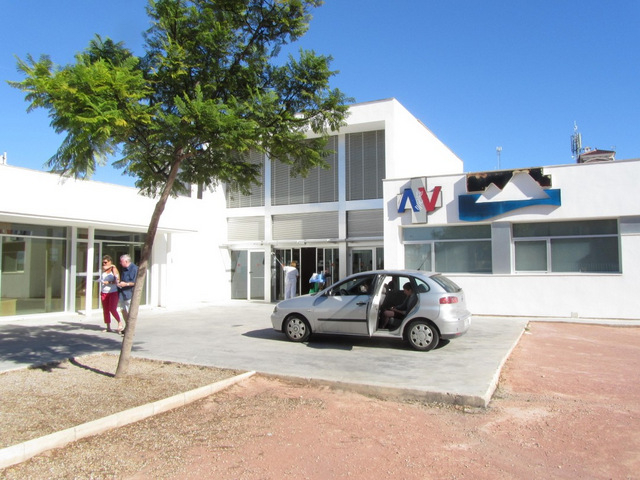 only a couple of minutes’ drive from Cabo Roig. During the week there is an all-night emergency unit at this centre, and at weekends this facility is operative 24 hours a day. The telephone number is 965 322965.
only a couple of minutes’ drive from Cabo Roig. During the week there is an all-night emergency unit at this centre, and at weekends this facility is operative 24 hours a day. The telephone number is 965 322965.
There is a chemist’s just opposite the health centre, on the landward side of the large roundabout on the main road, and another in the other direction just off the N-332 in La Zenia.
Two hospitals are located between 15 and twenty minutes’ drive away: one is the Los Arcos hospital to the south just outside San Javier (leave the AP-7 motorway at km 780 on the RM-1/MU-301 heading towards Santomera and Sucina), and the other is the Torrevieja hospital to the north (signposted from the N-332 on the CV-95 towards Orihuela).
Three golf courses within a 10 minute drive
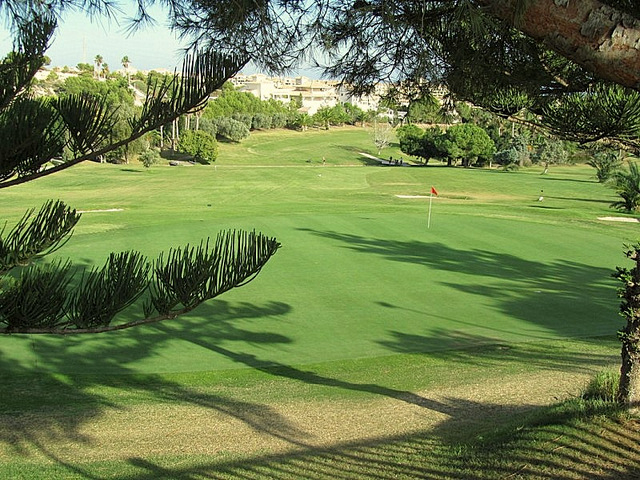 There are three golf courses within a ten-minute drive from Cabo Roig, namely Las Ramblas, Campoamor and Villamartín, and Las Colinas and Vistabella are only a few kilometres further afield. Under half an hour away by car is the historic town of Orihuela itself, which gives the municipality its name, and other possible visits include the cities of Alicante, Murcia and Cartagena, all of which are well under an hour away by road.
There are three golf courses within a ten-minute drive from Cabo Roig, namely Las Ramblas, Campoamor and Villamartín, and Las Colinas and Vistabella are only a few kilometres further afield. Under half an hour away by car is the historic town of Orihuela itself, which gives the municipality its name, and other possible visits include the cities of Alicante, Murcia and Cartagena, all of which are well under an hour away by road.
And there are plenty of beaches within easy walking distance, or a wider choice just a few minutes away by car.
Lots to see and do in the Orihuela municipality
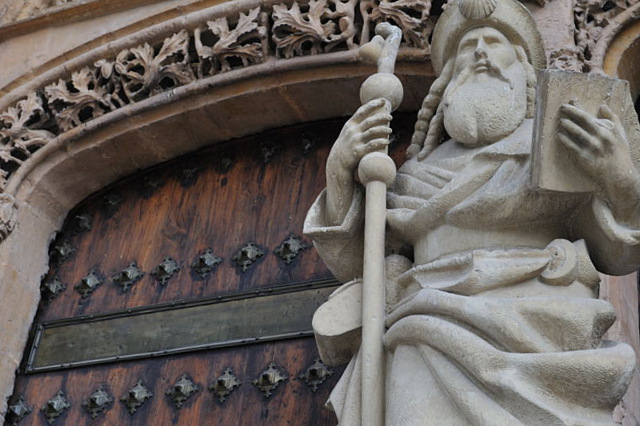 Orihuela as a municipality has a wide range of attractions and activities, with plenty of places to visit and activities to enjoy. More detailed information can be found in the dedicated Orihuela municipality section, accessed via the map box at the bottom of every page, including suggested places to visit and things to do.
Orihuela as a municipality has a wide range of attractions and activities, with plenty of places to visit and activities to enjoy. More detailed information can be found in the dedicated Orihuela municipality section, accessed via the map box at the bottom of every page, including suggested places to visit and things to do.



































